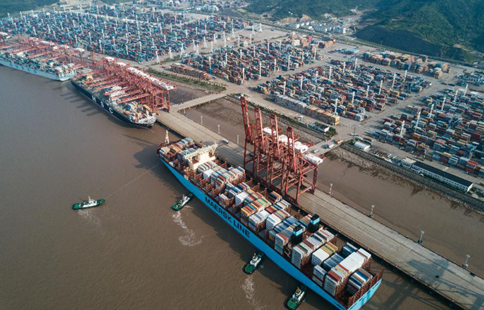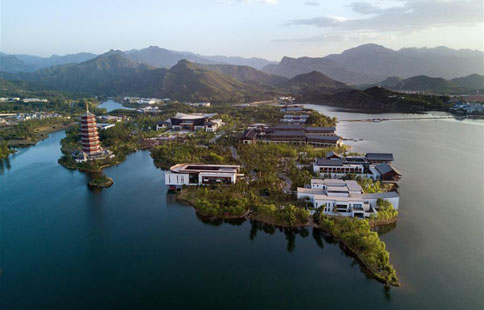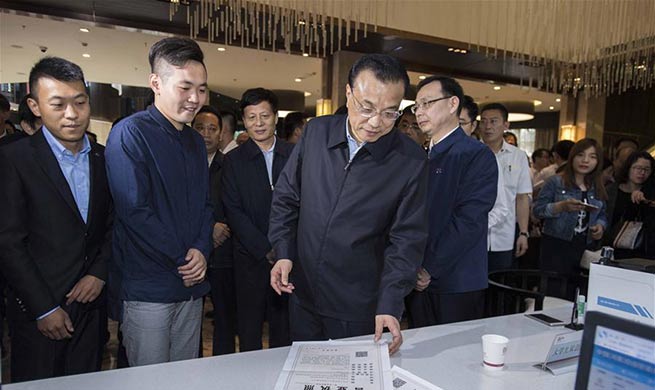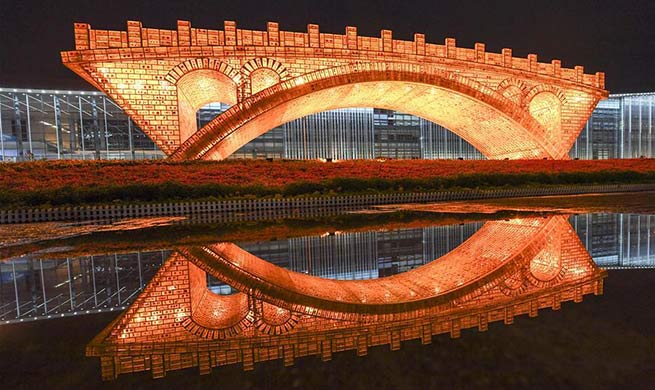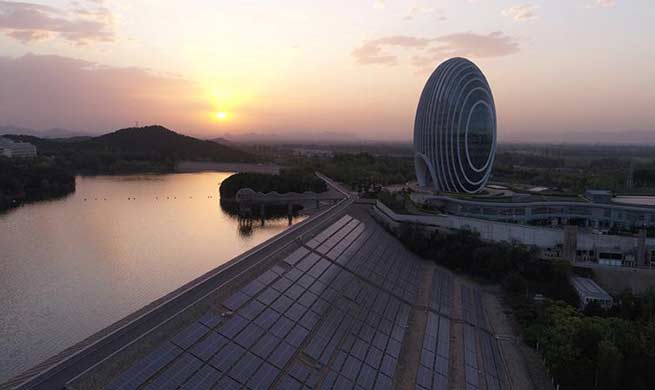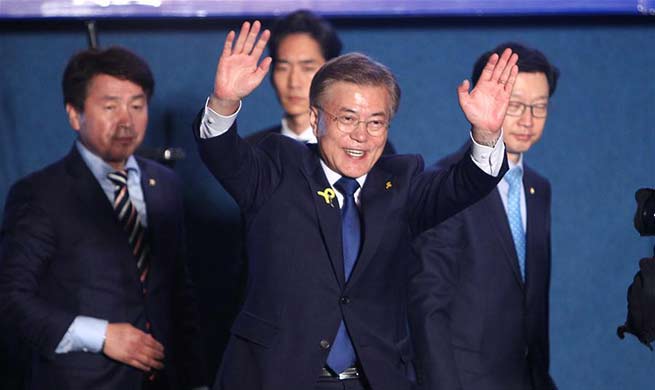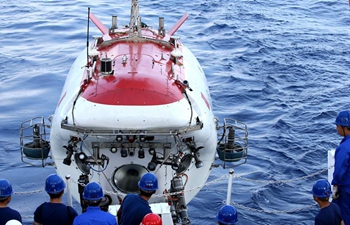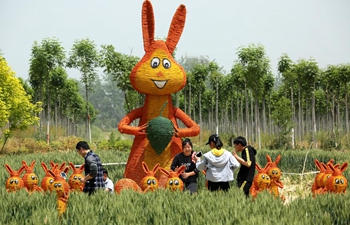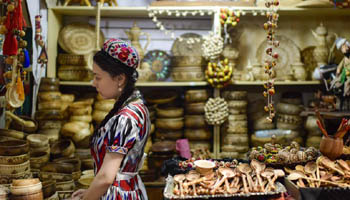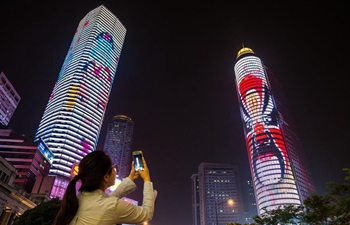by Xinhua writer Gu Zhenqiu
UNITED NATIONS, May 9 (Xinhua) -- The United Nations plans to take specific steps to help countries along the Belt and Road strengthen their national policy capacity in order to better carry out China's Belt and Road Initiative, a senior UN official said here Tuesday.
"The Belt and Road Initiative has provided a new, open and inclusive platform for international development cooperation, which can make a great contribution to the achievement of the Sustainable Development Goals (SDGs)," Hong Pingfan, director of the Development Policy and Analysis Division (DPAD) in the UN Department of Economic and Social Affairs, told Xinhua in an interview.
The specific UN measures include the DPAD's proposed and recently approved project which will be funded by the UN Peace and Development Trust Fund, he said.
The Belt and Road Initiative, which comprises the Silk Road Economic Belt and the 21st Century Maritime Silk Road, was brought up by Chinese President Xi Jinping in 2013 with an aim to build a trade and infrastructure network connecting Asia with Europe and Africa along the ancient Silk Road routes.
CAPACITY DEVELOPMENT PROJECT
In September 2015 at UN Headquarters in New York, Xi announced that China will establish a 1-billion-dollar China-UN peace and development fund to support UN's work, advance multilateral cooperation and contribute more to world peace and development.
Based on the initiative, China and the UN agree that 200 million dollars of the fund will be hosted by the UN and will finance relative activities in the form of UN Peace and Development Trust Fund.
Titled "strengthening national policy capacity for jointly building the Belt and Road towards the Sustainable Development Goals," the project is intended to strengthen national policy capacity in countries along the Belt and Road for "analyzing and formulating coordinated, integrative policies to support international development cooperation under the Belt and Road Initiative, so as to accelerate the implementation of the 2030 Agenda and the achievement of the SDGs," according to Hong.
Hong was invited to attend the Belt and Road Forum for International Cooperation scheduled for May 14-15 in Beijing.
Hong said 65 countries are on the Belt and Road, which run through Asia, Europe and Africa, accounting for 60 percent of the world population, 30 percent of world gross product, 40 percent of world trade, and 50 percent of those living under the extreme poverty line around the world.
"The majority of these countries are developing countries, including a number of Least Developed Countries and Land Locked Developing Countries (LLDCs)," he said. "These countries are facing special challenges, but have huge potential for sustainable development."
"The Belt and Road Initiative also welcomes the countries beyond the geographic definition of the Belt and Road to take part in the development cooperation initiative," he said. "The Belt and Road is in line with the purposes and principles of the Charter of the United Nations, and shares with the 2030 Agenda in many respects a similar vision and a set of basic principles."
The spirit of the Belt and Road to promote win-win cooperation, common development and prosperity, peace and cooperation, openness and inclusiveness, as well as mutual understanding and trust, to a large extent accords with that of the 2030 Agenda for Sustainable Development, he said.
"Many countries have signed agreements to align their own development strategies and initiatives with the Belt and Road Initiative," he said. "A large number of specific cooperation projects in the five broad Belt and Road priority areas have been launched. The Asian Infrastructure Investment Bank is already in operation to finance (such) projects."
As a result of the activities related to the Belt and Road, both trade and investment flows in many countries along the Belt and Road showed more vibrancy in 2015-2016 than in other countries, against the backdrop of a generally subdued global trade and investment environment, he noted.
"This is just a beginning," he said. "The prodigious long-run potential of the Belt and Road for the development of many developing countries, particularly for the achievement of the SDGs, remains largely untapped."
Hong said that his department has set up a capacity development project to help most developing countries along the Belt and Road fully benefit from the huge potential of international development cooperation under the initiative.
PARTICIPATING COUNTRIES
The first round of the project will be kicked off in the second half of the year, and 20 countries along the Belt and Road will be selected, he said. "The remaining countries along the Belt and Road will have opportunities to participate in future rounds."
"These countries will be from West Asia, South Asia, Africa and Europe," he said. "We will set up a team to go to the 20 countries for the training program."
He said the project contains the following four key elements:
-- Training and institutional networking of policymakers and policy researchers in participating countries, through workshops.
-- Policy dialogues at different levels, including dialogues with national policymakers, dialogues among the participating countries, and dialogues with international organizations and on international platforms, such as the UN High-Level Political Forum and Development Cooperation Forum.
-- Joint research and policy analysis among the project participants on various policy options and alternative scenarios under the Belt and Road Initiative for the achievement of the SDGs in both these countries and the rest of the world.
-- Publication and dissemination of the project outcome, including a report of the latest development of the measures undertaken by participating countries in the five Belt and Road priority areas for cooperation, major achievements, gaps and risks, policy options, and alternative scenarios for the achievement of the SDGs, in efforts to link specific situations in the participating countries to broad global macro trends in the implementation of the 2030 Agenda.
"If the project is renewed for a longer period, this report can become a recurrent biennial publication to update dynamically the development under the Belt and Road and the corresponding progress in the achievement of the SDGs," Hong said. "The report and other outcome(s) of the project will be disseminated to policymakers and the general public through various events."
"We are going to work together with a large number of partners," he said. "National partners include development ministries, agencies and development policy research institutions, while international partners include UN agencies, fund and programs, and regional commissions."





